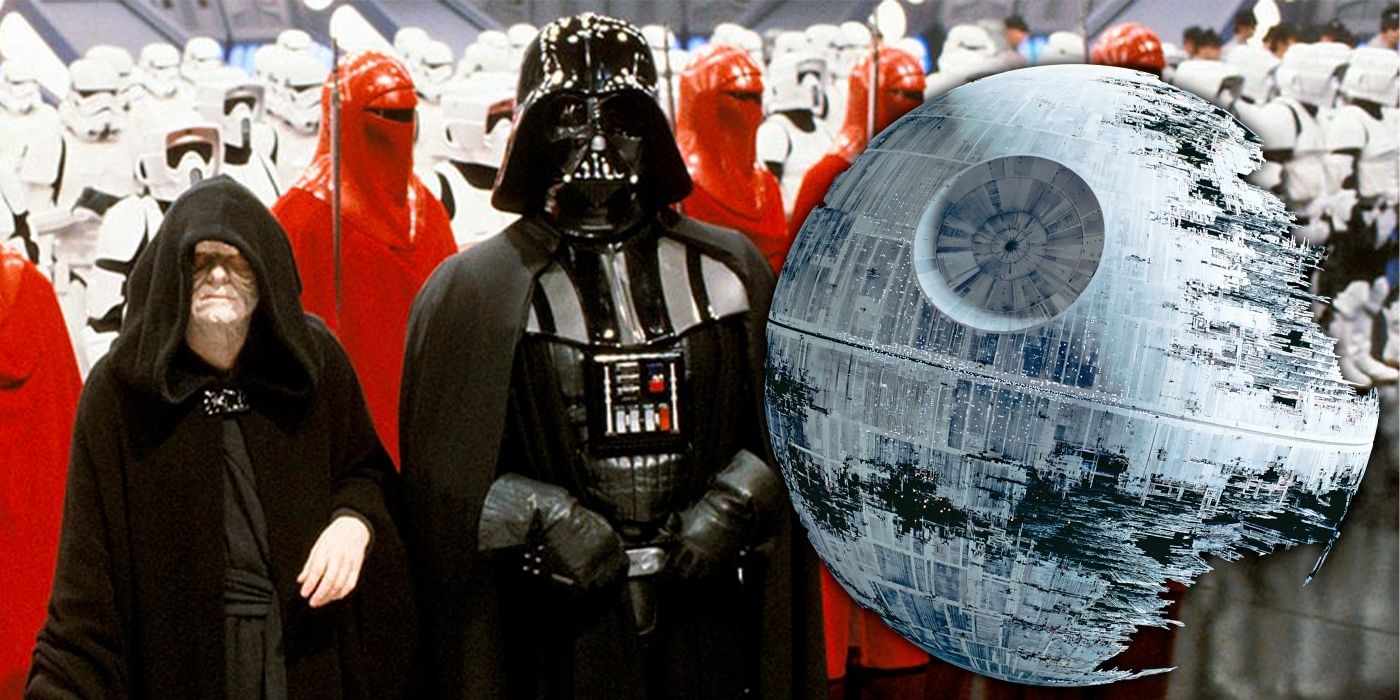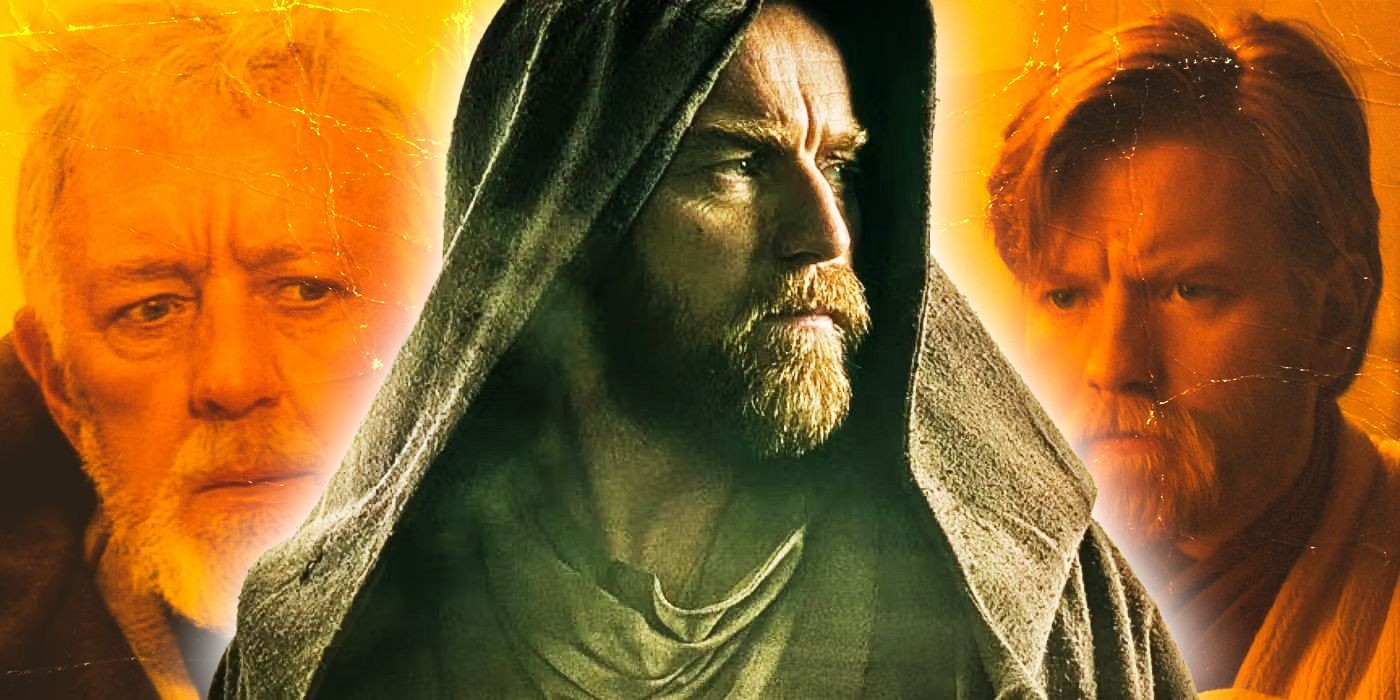Why Did Star Wars Start With Episode 4? This question has intrigued fans for decades. At WHY.EDU.VN, we explore the captivating reasons behind George Lucas’s decision to begin his epic saga with A New Hope. Join us as we delve into storytelling techniques, filmmaking logistics, and the grand vision that shaped the Star Wars universe. This article will discuss the chronological order, cinematic vision, and production challenges that influenced the series’ unique beginning.
1. George Lucas’s Grand Vision and Storytelling Choices
George Lucas had a sprawling vision for the Star Wars saga. He conceived it as a multi-generational epic, drawing inspiration from sources like Flash Gordon serials and classic mythology. Lucas initially envisioned a nine-part saga, later expanded to twelve. Starting with Episode IV: A New Hope allowed him to introduce a rich, pre-existing world to audiences. He wanted to drop viewers into a galaxy already in motion, hinting at a deeper history and larger conflict. This approach created intrigue and a sense of wonder, prompting viewers to ask questions and become invested in the unfolding story.
 Concept art depicting an early vision for Star Wars featuring a character resembling Luke Skywalker
Concept art depicting an early vision for Star Wars featuring a character resembling Luke Skywalker
This strategy contrasts with a more linear storytelling approach. By beginning in the middle, Lucas could reveal information gradually, building suspense and creating a sense of mystery around the characters and events. Key elements such as the Jedi Order, the Force, and the Galactic Empire were introduced without extensive exposition, allowing the audience to discover them organically as the story progressed.
2. Overcoming Technical and Logistical Challenges
Lucas faced significant technical and logistical hurdles in bringing his vision to life. In the 1970s, special effects technology was still in its infancy. He had to make compromises and prioritize certain aspects of the story over others. Concentrating on Episode IV allowed him to focus on creating a self-contained, visually compelling narrative that would capture the audience’s imagination. According to “The Secret History of Star Wars” by Michael Kaminski, the decision to start with Episode IV was also driven by technical and storytelling constraints.
2.1. Special Effects Limitations
The limitations of special effects technology heavily influenced Lucas’s decision. Creating the prequel trilogy first would have required depicting the Clone Wars, a large-scale conflict involving numerous characters, vehicles, and environments. The technology needed to convincingly portray such a war simply did not exist in the 1970s. By starting with Episode IV, Lucas could focus on a more manageable story with fewer complex visual effects.
2.2. Budgetary Constraints
Budgetary limitations also played a role. Securing funding for a science fiction film of this magnitude was a challenge. Lucas needed to prove that his vision could be realized on a reasonable budget. Focusing on a single, self-contained story allowed him to minimize risks and demonstrate the potential of the Star Wars universe to studio executives.
2.3. Streamlining the Narrative
Starting with Episode IV streamlined the narrative, making it more accessible to a wider audience. The film introduces familiar archetypes such as the hero, the princess, and the villain, and presents a clear and compelling conflict between good and evil. This approach made it easier for viewers to connect with the characters and become invested in the story, paving the way for future installments.
3. Strategic Storytelling and Audience Engagement
Lucas employed strategic storytelling techniques to engage the audience and create a lasting impact. By beginning in the middle of the saga, he piqued viewers’ curiosity and left them wanting more. The film’s opening crawl hinted at a larger conflict and a rich history, prompting viewers to speculate about the events that had led to the current situation.
3.1. Introducing Key Concepts Gradually
Key concepts such as the Force, the Jedi Order, and the Galactic Empire were introduced gradually, allowing the audience to absorb them organically. This approach prevented information overload and created a sense of mystery around these elements. The characters’ reactions to these concepts provided valuable context, helping viewers understand their significance within the Star Wars universe.
3.2. Building a Sense of Mystery and Intrigue
Starting with Episode IV built a sense of mystery and intrigue around the characters and their motivations. Luke Skywalker’s desire to escape Tatooine, Han Solo’s reputation as a smuggler, and Princess Leia’s involvement in the Rebel Alliance all hinted at deeper backstories and hidden agendas. This approach kept viewers guessing and encouraged them to speculate about the characters’ pasts and their potential futures.
3.3. Creating a Lasting Impact
The strategic storytelling techniques employed in Episode IV created a lasting impact on the audience. The film’s themes of hope, courage, and the triumph of good over evil resonated with viewers of all ages. The characters’ struggles and sacrifices inspired viewers to believe in themselves and their ability to make a difference in the world. The film’s iconic moments, such as the destruction of the Death Star, became cultural touchstones, solidifying its place in cinematic history.
4. The Impact of the Prequel Trilogy
The release of the prequel trilogy (Episodes I-III) provided context and filled in the gaps in the Star Wars timeline. Lucas was able to realize his original vision of an epic story told over generations. The prequels explored the rise of the Galactic Empire, the fall of the Jedi Order, and the origins of key characters such as Darth Vader.
{width=1400 height=700}4.1. Expanding the Star Wars Universe
The prequels expanded the Star Wars universe, introducing new characters, planets, and technologies. The Clone Wars, which were only hinted at in the original trilogy, became a central focus of the prequels. The films explored the political machinations that led to the rise of the Empire and the ethical dilemmas faced by the Jedi Order.
4.2. Providing Context and Filling in Gaps
The prequels provided context for the events of the original trilogy, explaining the origins of the conflict between the Rebel Alliance and the Empire. They also filled in gaps in the characters’ backstories, revealing the events that shaped their personalities and motivations. Anakin Skywalker’s transformation into Darth Vader, for example, was explored in detail, providing insight into his motivations and inner struggles.
4.3. Completing Lucas’s Vision
The prequel trilogy completed Lucas’s vision for the Star Wars saga, creating a cohesive and interconnected narrative that spanned multiple generations. The films explored themes of destiny, choice, and the consequences of power. They also highlighted the importance of hope, courage, and the ability to overcome adversity. The prequels may have had a mixed reception, but it’s undeniable that they rounded out Lucas’ grand vision.
5. Alternative Theories and Fan Speculations
Over the years, numerous alternative theories and fan speculations have emerged regarding the decision to start with Episode IV. Some fans believe that Lucas simply chose the most exciting part of the story to begin with, while others suggest that he wanted to create a sense of mystery and intrigue.
5.1. The “Most Exciting Part” Theory
According to this theory, Lucas chose Episode IV as the starting point because it was the most exciting part of the story. The film features thrilling action sequences, memorable characters, and a clear and compelling conflict between good and evil. By starting with the most exciting part of the story, Lucas could capture the audience’s attention and draw them into the Star Wars universe.
5.2. The “Mystery and Intrigue” Theory
This theory suggests that Lucas wanted to create a sense of mystery and intrigue by starting in the middle of the saga. By withholding information about the events that had led to the current situation, he could pique viewers’ curiosity and encourage them to speculate about the characters’ backstories and motivations. This approach would create a more immersive and engaging viewing experience.
5.3. The “Marketing Ploy” Theory
Some fans believe that starting with Episode IV was simply a marketing ploy designed to generate buzz and excitement. By releasing the films out of chronological order, Lucas could create a sense of anticipation and encourage viewers to see each installment as it was released. This approach would maximize the films’ box office potential and ensure their long-term success.
6. Lessons Learned and the Future of Star Wars Storytelling
The decision to start with Episode IV has had a profound impact on the Star Wars franchise and on storytelling in general. It demonstrated the power of non-linear storytelling and the importance of creating a sense of mystery and intrigue.
6.1. The Power of Non-Linear Storytelling
Starting with Episode IV demonstrated the power of non-linear storytelling. By beginning in the middle of the saga, Lucas could reveal information gradually, building suspense and creating a sense of wonder. This approach allowed him to explore complex themes and characters in a more nuanced way.
6.2. The Importance of Mystery and Intrigue
The decision to start with Episode IV highlighted the importance of creating a sense of mystery and intrigue. By withholding information about the events that had led to the current situation, Lucas could pique viewers’ curiosity and encourage them to speculate about the characters’ backstories and motivations. This approach created a more immersive and engaging viewing experience.
6.3. Shaping Future Storytelling
The success of Star Wars has influenced countless films, television shows, and video games. Many storytellers have adopted the non-linear storytelling techniques popularized by Lucas, creating complex and engaging narratives that challenge audiences to think critically and piece together the events of the story. The decision to start with Episode IV has left an indelible mark on the landscape of modern storytelling.
In conclusion, Star Wars started with Episode 4 due to a combination of creative vision, technical limitations, and strategic storytelling choices. George Lucas’s decision to begin in the middle of the saga allowed him to introduce a rich and complex world to audiences, build suspense, and create a lasting impact. While alternative theories and fan speculations abound, the fact remains that starting with Episode IV was a pivotal moment in cinematic history.
Discover More at WHY.EDU.VN
Do you have burning questions about Star Wars or any other topic? At WHY.EDU.VN, our team of experts is dedicated to providing clear, accurate, and insightful answers to all your queries. Whether you’re curious about science, history, culture, or anything in between, we’re here to help you explore the world and expand your knowledge. Visit WHY.EDU.VN today and unlock a world of answers.
Need Expert Answers? Contact Us!
- Address: 101 Curiosity Lane, Answer Town, CA 90210, United States
- WhatsApp: +1 (213) 555-0101
- Website: WHY.EDU.VN
FAQ Section
Here are some frequently asked questions related to the topic of why Star Wars started with Episode 4.
1. Why didn’t George Lucas start with Episode I?
George Lucas started with Episode IV due to a combination of factors, including special effects limitations, budgetary constraints, and strategic storytelling choices. He wanted to introduce a rich and complex world to audiences while managing the technical challenges of filmmaking in the 1970s.
2. Was the prequel trilogy always part of Lucas’s plan?
Yes, the prequel trilogy was always part of Lucas’s grand vision for the Star Wars saga. He conceived of the story as a multi-generational epic and planned to tell the complete story over multiple films.
3. How did the release of the prequel trilogy affect the original films?
The release of the prequel trilogy provided context and filled in the gaps in the Star Wars timeline. It allowed Lucas to realize his original vision of an epic story told over generations and enhanced the viewing experience for fans.
4. Did Lucas ever consider making the sequels before the prequels?
While Lucas had ideas for sequels, the technical and logistical challenges of making the prequels first were too great in the 1970s. He needed to wait for special effects technology to advance before he could realize his vision for the Clone Wars.
5. Are there any other reasons why Lucas chose to start with Episode IV?
Some fans believe that Lucas chose Episode IV because it was the most exciting part of the story, while others suggest that he wanted to create a sense of mystery and intrigue. Regardless of the specific reasons, the decision to start with Episode IV has had a profound impact on the Star Wars franchise.
6. How does the non-linear storytelling in Star Wars affect the audience’s experience?
The non-linear storytelling in Star Wars creates a sense of mystery and intrigue, prompting viewers to speculate about the characters’ backstories and motivations. It also allows for a more nuanced exploration of complex themes and characters.
7. What lessons can storytellers learn from the decision to start with Episode IV?
Storytellers can learn the power of non-linear storytelling, the importance of creating a sense of mystery and intrigue, and the value of strategic planning and world-building.
8. How did the success of Star Wars influence other films and television shows?
The success of Star Wars has influenced countless films, television shows, and video games. Many storytellers have adopted the non-linear storytelling techniques popularized by Lucas, creating complex and engaging narratives that challenge audiences to think critically and piece together the events of the story.
9. What is the future of Star Wars storytelling?
The future of Star Wars storytelling is wide open. With new films, television shows, and video games in development, there are endless possibilities for exploring new characters, planets, and storylines.
10. Where can I find more answers to my questions about Star Wars and other topics?
You can find more answers to your questions about Star Wars and other topics at why.edu.vn. Our team of experts is dedicated to providing clear, accurate, and insightful answers to all your queries.

